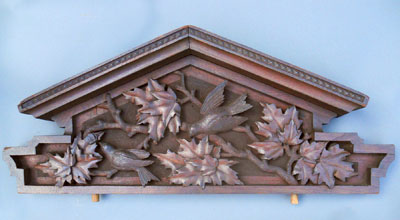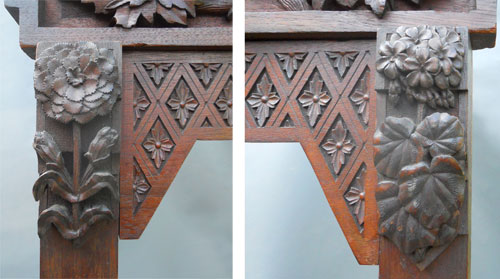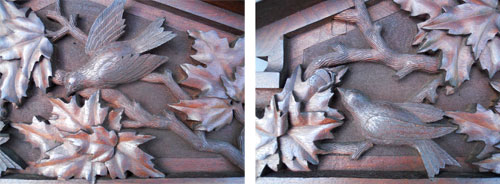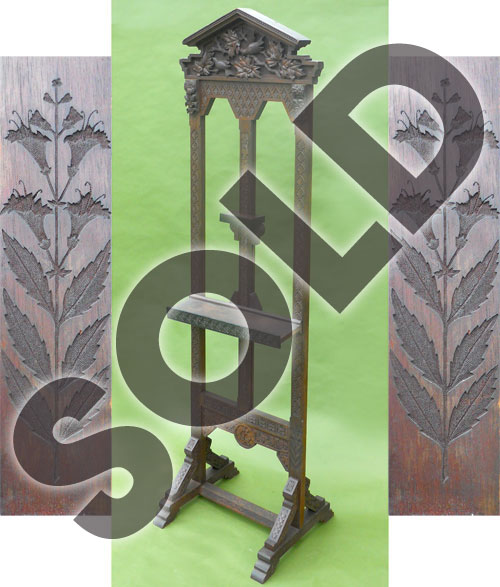
IMPORTANT CINCINNATI ART-CARVED PARLOR EASEL
Circa 1876
Walnut and ebony, Height: 63 inches, Width: 26 inches, Depth: 20 inches
Signed “C. H.,” attributed to Claudine “Claude” Raguet Hirst. (1855-1942)
|
|
|
|
|
| Hirst was a painter who became known as “the female Harnett” because her still lifes so closely resembled those of William Harnett. She studied woodcarving in Cincinnati at the school established by Henry Fry, William Fry, and Benn Pitman. Carvers trained at the School of Design of the University of Cincinnati exhibited seventy-four pieces in the Women’s Pavilion at the Philadelphia Centennial exposition. Hirst exhibited a carved jewel casket and a “parlor easel with oil painting,” which I believe to be this easel. The flight of birds carved in high relief support the early date—similar birds appear on the 1878 Cincinnati Music Hall organ screen for which Hirst supplied a portion of the molding. Such birds also appear on the famous bedstead made by Benn and Adelaide Pitman in 1882 although the rest of the carving on the Hirst easel is far more delicate and refined. |
|
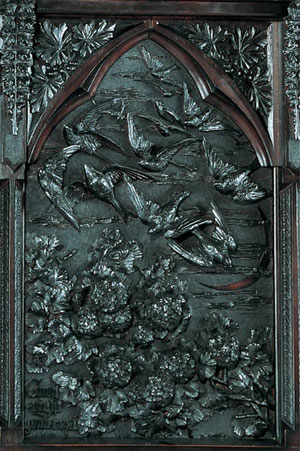 Benn Pitman (1822-1910), designer; Adelaide Nourse Pitman (1859-1893), carver;
Benn Pitman (1822-1910), designer; Adelaide Nourse Pitman (1859-1893), carver;
Elizabeth Nourse (1859-1938), painter, United States (Cincinnati)
|
|
| Among the expertly and accurately depicted native plants are passionflowers, bindweed or morning glory, hedera helix or common ivy, hops, honeysuckle, geranium, maple leaves, and carnation (The red carnation is the Ohio state flower.) Stylized borders are also made up of identifiable flora, which are executed in the Modern Gothic style. The characteristic stippling behind the swallows is particularly fine. |
|
|
|
|
|
|
|
|
|
|
|
|
|
|
|

